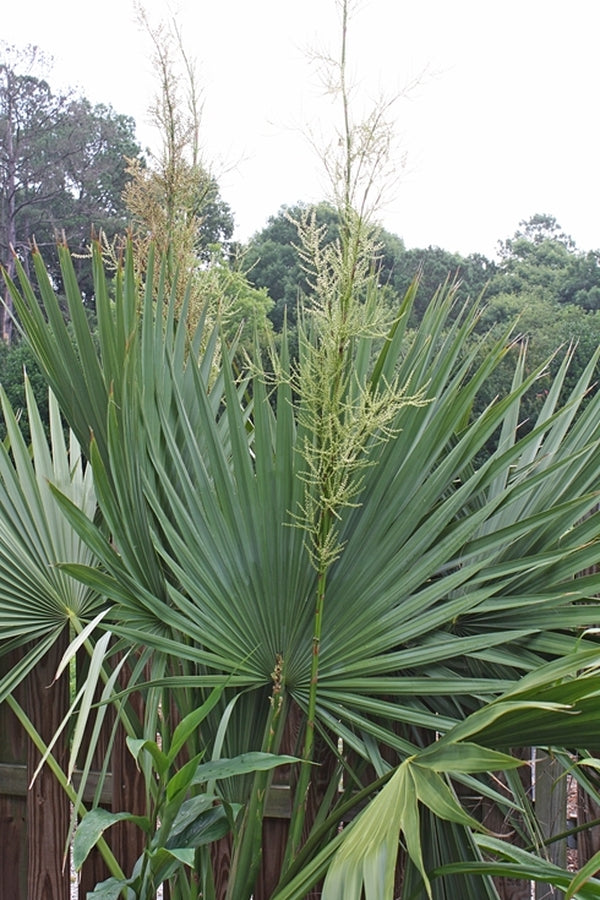Certain plants, like the late comedian Rodney Dangerfield, never get the respect they deserve, and a classic example is our NC native scrub palm, Sabal minor. Perhaps it is the ubiquitous nature of the Sabal minor as you drive south on Interstate 95, or perhaps it just looks too tropical for temperate native plant enthusiasts. Could it be that it just needs a catchy PR slogan like 'Got Palms?' to encourage more folks to plant Sabal minor?
Sabal minor var. louisiana
In the mid-1990s, I was having soil excavated from a high spot on my property to build greenhouses, when I nearly did a Michael Jordanesque leap into the front end loader bucket upon noticing petrified wood interspersed throughout the dirt. It wasn't just any petrified wood, which would have been exciting enough, but my haul included pieces of 90 million-year-old Sabal palms that grew right here on my property. Ok, so that's a long time ago, when we were in the midst of real global warming, but we also have old photos from the 1940s that show large populations of our native scrub palm being cleared for agriculture less than an hour south of downtown Raleigh, near the town of Dunn. Those who've studied such things tell me that even in recent history, the native range of Sabal minor extended even as far north as coastal Virginia.
So, why should you grow Sabal minor in your garden? How many plants grow equally as well in sun or shade, in alkaline or acidic soils...in bogs or among cacti, and look great every month of the year? Very darn few! Sabal minor makes a lovely evergreen perennial specimen, eventually reaching 5' tall x 9' wide, although both giant (10' tall) and dwarf (2' tall) forms are both now available. Starting in early August, scrub palms are adorned with 8-10' tall flower spikes of tiny white flowers that morph by Thanksgiving into black fruit.
Sabal uresana
So, what's the downside of growing Sabal minor? Scrub palmettos require a bit of planning since, due to root regeneration issues, they cannot be moved once established. Unlike other southeast native palms, including the above-ground trunked Sabal palmetto which are moved like telephone poles, Sabal minor has a dyslexic trunk that actually grows in reverse...into the ground to nearly 6' deep. Because of this bizarre trait, however, Sabal minor acquires incredible winter hardiness. Sabal minor seed are easy to grow when planted fresh, but if you don't want a forest of seedlings popping up in your garden, remove the seed stalks before the seeds drop in fall.
Visitors to many of the City of Raleigh, NC parks will see established plantings of Sabal minor thanks to the foresight of retired city horticulturists, Noel Weston and Alan Brunner. We hope you will discover the pleasure of Sabal minor palms.

